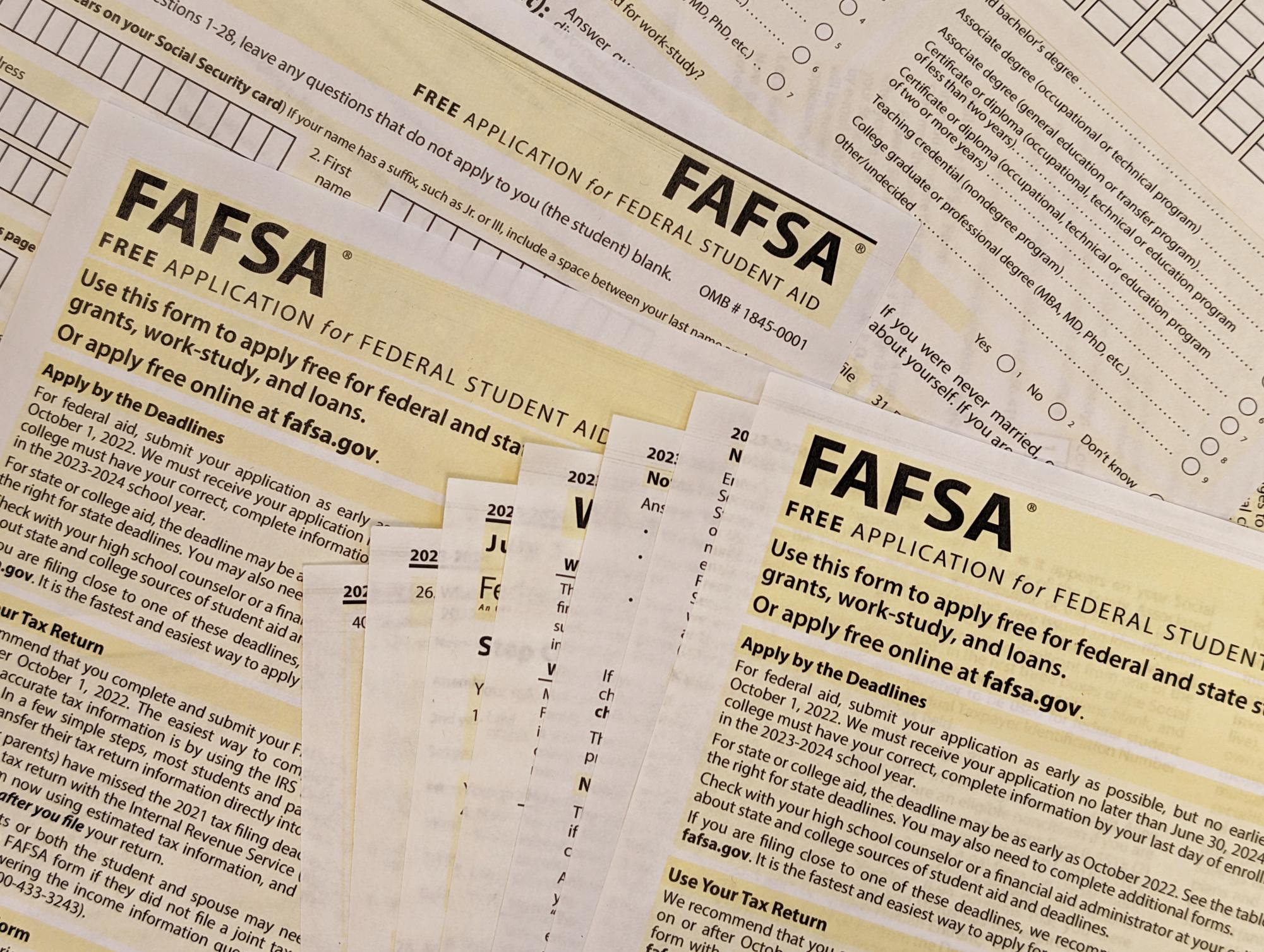
The 2024-25 FAFSA opens later this year and includes a number of new features and processes for students seeking financial aid.
The Free Application for Federal Student Aid, or FAFSA is used to determine how much federal aid students are eligible to receive. The financial aid includes Pell Grants, work-study funds and loans. Some scholarships factor in Student Aid Reports generated by completing the FAFSA.
The FAFSA is free to access and typically completed online, but can also be filled out on paper and mailed. The 2024-25 FAFSA will be available by Dec. 31, 2023 instead of its usual Oct. 1st date. The delay is due to the implementation of the FAFSA Simplification Act that was passed in 2020. No exact date has been announced yet. The 2025-2026 FAFSA will be available on Oct. 1, 2024.
The act removed many questions, including questions about Selective Service registration and drug convictions. Some applicants may only have to answer 18 questions. The new FAFSA also introduces questions about sex, race and ethnicity, which will have no effect on aid eligibility. The previous FAFSA had 103 questions.
The act also introduced the Student Aid Index, or SAI, a new name for the Expected Family Contribution, or EFC. The SAI determines how much financial aid students are eligible for. Also, the SAI can go as low as -$1,500, which increases aid eligibility. The renaming also clarifies that the amount is not how much a student will need to pay. The formula for the SAI is also different, including removing the number of family members in college from the calculation.
A student’s SAI number is determined by multiple factors such as income, state and tax allowances, dependency status and many others.
Cost of Attendance (COA), which considers direct costs or charges from a university and indirect costs such as living expenses, is the base of the equation that determines how much aid a student will receive.
A student’s SAI number is subtracted from their COA number, leaving the amount of financial need.
How students and their parents submit their information for the 2024-25 FAFSA form is also new.
Both parents and students must create an FSA ID to access the FAFSA forms, a social security number isn’t required to create an ID. Anyone asked to provide information is now called a contributor.
Contributors need to provide consent for their Federal Tax Information (FTI) to be included in the FAFSA application. Contributors’ tax information will be transferred directly from the IRS to a FAFSA, streamlining the process by eliminating the need for the Data Retrieval Tool that was available on the applications for previous years.
Students applying to postsecondary schools will also be able to send their FAFSAs to up to 20 institutions.
For more information on the impact of changes to the FAFSA application process, students should reach out to the SFSU Office of Financial Aid, or go to the Federal Student Aid website.
SFSU also provides a FAFSA simplification guide, for students looking for step-by-step instructions on the application.









